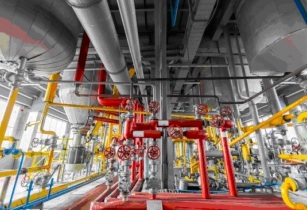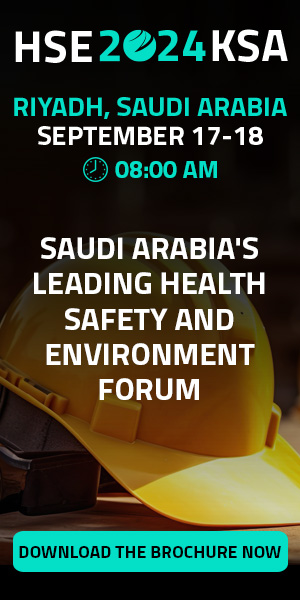By Pierre R. Roberge. Article originally appeared in Materials Performance Magazine
High-temperature corrosion is a form of corrosion that does not require the presence of a liquid electrolyte. In this corrosion mechanism, metals react directly with gaseous atoms in the atmosphere rather than ions in solution. Sometimes, this type of damage is called “dry corrosion” or “scaling.” The first quantitative analysis to oxidation behavior was made in the early 1920s with the postulation of the parabolic-rate theory of oxidation by Tammann and, independently, by Pilling and Bedworth.
Although temperatures greater than approximately 90 or 150 °C are sometimes considered “high temperature” (e.g., for heated oil pipelines), this article is concerned primarily with temperatures greater than the “red-hot range,” primarily 650 °C and greater.
Alloys often rely upon the oxidation reaction to develop a stable protective scale that resists further corrosion, such as sulfidation, carburization, and other forms of high-temperature attack. In general, the names of the corrosion mechanisms are determined by the dominant corrosion product(s). For example, oxidation (the general term for a variety of reactions) implies oxides, sulfidation indicates sulfides, sulfidation/oxidation indicates a combination of sulfides plus oxides, and carburization indicates carbides.1
Oxidizing environments refer to high-oxygen activities (concentrations) with excess oxygen. Reducing environments are characterized by low-oxygen activities, with no excess oxygen available. Clearly, oxide-scale formation is more limited under such reducing conditions. It is for this reason that reducing industrial environments are generally considered to be more corrosive than the oxidizing variety.
The properties of high-temperature oxide films, such as their thermodynamic stability, ionic-defect structure, and detailed morphology, play a crucial role in determining the oxidation resistance of a metal or alloy in a specific environment. High-temperature corrosion is a widespread problem in various industries, including:
• Refining and petrochemical
• Power generation (nuclear and fossil fuel)
• Aerospace and gas turbine
• Heat treating
• Mineral and metallurgical processing
• Chemical processing
• Automotive
• Pulp and paper
• Waste incineration
Corrosion resistance at high temperatures stems from a combination of two basic factors: thermodynamics, which determines whether a corrosive reaction will proceed, and kinetics, which determines the rate at which the reaction may proceed. The rate of the reaction may be reduced by careful selection of alloying components, such as inclusion of a multivalent metal that can react with a greater number of oxidizing atoms.
The need for a careful study of the properties of a heat-resistant alloy and its behavior in the anticipated environment is of considerable importance in the selection of a suitable alloy for a particular service application. New alloys and non-metallic materials that are continually being made available to industry are making it possible to make better selections and to establish safe working limits within which the material can be expected to give satisfactory performance over a reasonable length of time.
This article was initially published in Materials Performance Magazine.
References
1 R.C. John, “Compilation and Use of Corrosion Data for Alloys in Various High-Temperature Gases,” CORROSION/99, paper no. 73 (Houston, TX: NACE, 1999).
This article is adapted by MP Technical Editor Norm Moriber from Corrosion Basics—An Introduction, Second Edition, Pierre R. Roberge, ed. (Houston, TX: NACE International, 2006), pp. 217-218.
About NACE International - www.nace.org
NACE International, The Worldwide Corrosion Authority, was established in 1943 by eleven corrosion engineers from the pipeline industry as the “National Association of Corrosion Engineers.”
Today, NACE serves nearly 36,000 members in over 130 countries and is recognized globally as the premier authority for corrosion control solutions. The organization offers technical training and certification programs, conferences, industry standards, reports, publications, technical journals, government relations activities and more.
NACE International is headquartered in Houston, Texas, with offices in San Diego, California; Kuala Lumpur, Malaysia; Shanghai, China, Sao Paulo, Brazil and Al-Khobar, Saudi Arabia.
Materials Performance (MP) magazine is the flagship publication of NACE International. Published monthly, MP is the worlds largest circulation journal dedicated exclusively to corrosion prevention and control.














